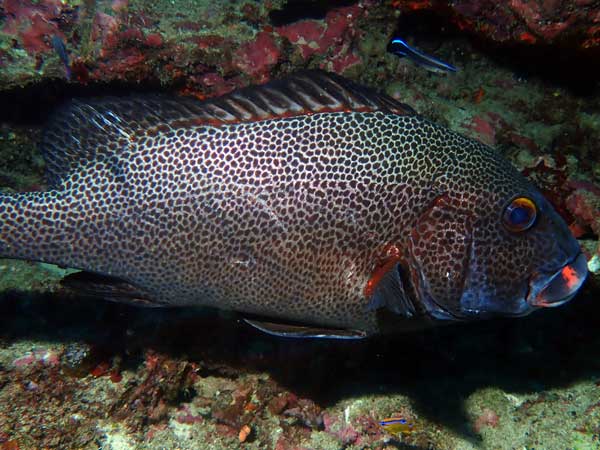|
Michael McFadyen's Scuba Diving – Lord Howe Island – The Arch
Well, when I went to Lord Howe Island in May 2022, I discovered there is yet another dive site called The Arch in New South Wales. This must be the most popular name for a dive site in the world I reckon. Anyway, this is quite an interesting dive site and, unlike all the others in NSW, The Arch is not composed of rock, but coral.
The south-western side of LHI contains the lagoon and the barrier reef which runs from the northern end of the island to the southern end. The lagoon has a few entrances, at least two at the southern end and one at the northern end. The western side of the island is suitable to be dived in easterly, northerly and north-easterly winds when here will be fairly protected.
This dive site is located close to North Passage, the northern entrance to the lagoon. Its actual location is GPS 31°32'01.835"S 159°02'50.935"E using WGS84 as the datum. This is about one kilometre due south of North Passage and about 300 metres off the barrier reef.
 |  |
| The Arch from the south | Looking from the north through The Arch |
To do this dive the dive boat anchors in about 15 metres of water on a sandy bottom. The Arch should be about 30 metres away and easily visible as you descend. The bottom here is sand in spots and coral covering the rest. The Arch is quite a decent sized structure consisting of a section of the coral reef which has been undermined to create a large archway through from the southern side to the northern side.
As you swim towards the archway, you will see a lot of large sweetlips in and around the arch. As you swim through the arch, there are great opportunities to get photos of fish and divers silhouetted against the blue water. Once on the northern side of The Arch, the dive guide will generally take you off to the north-west across a rubble bottom to another sandy area and then back via a large crack or small gully to the south.
 |  |
| The gully | A narrow crack |
Along this canyon there are a number of small overhangs and we found many crayfish and some slipper crays. After coming out of the gully you may see some sharks. We saw a few Galapagos sharks in this area. These are the dominant shark species at LHI. From here it is a short distance back to the east to the anchor.
After this we went south-east and up a narrower slit over to the back of the reef to the east of The Arch. From here we came back over the shallower section of reef (6 metres) to the anchor. The rest of the dive was spent in this area.
I also saw quite a few tropical fish species, including many different butterflyfish, some firefish, some leatherjackets and hundreds of one-spot pullers and a few trevally. However, I did not see any nudibranchs.
 |  |
| Dotted sweetlips | Mertens butterflyfish are seen on all sites |
On my dive in May, I had 21.4°C water and at least 30 metres visibility. A pretty interesting dive site.
| 
 v6.00.307 © 2003-2005
v6.00.307 © 2003-2005